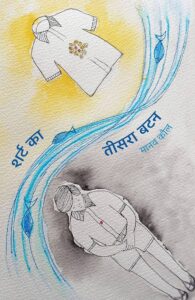Q. Identify the correct descending chronological order of the following acts. (December 2023, UGC NET)
(A) Trade Union Act
(B) Industrial Dispute Act
(C) Employees Insurance Act
(D) Working Journalists Act
(E) Payment of Wages Act
Choose the correct answer from the options given below:
1. A, B, C, D, E
2. B, C, D, E, A
3. D, C, B, E, A
4. C, D, A, B, E
Correct Ans: (3)
Explanation: Correct descending chronological order of the following acts are: Working Journalists Act (1955); Employees Insurance Act (1948); Industrial Dispute Act (1947); Payment of Wages Act (1936); Trade Union Act (1926).
1. Working Journalists Act (1955):The Working Journalists and Other Newspaper Employees (Conditions of Service) and Miscellaneous Provisions Act, 1955, was enacted to regulate the conditions of service of working journalists and other employees in newspaper establishments. The act ensures fair wages, proper working conditions, and job security for journalists.
2. Employees Insurance Act (1948):The Employees’ State Insurance Act, 1948, provides for a scheme of health insurance for Indian workers. It offers medical, cash, maternity, disability, and dependent benefits to employees. The act aims to protect workers against sickness, maternity, disablement, and death due to employment injury.
3. Industrial Dispute Act (1947):The Industrial Disputes Act, 1947, was enacted to provide for the investigation and settlement of industrial disputes in India. It aims to promote industrial peace and harmony by addressing disputes between employers and employees through negotiations, arbitration, and adjudication.
4. Payment of Wages Act (1936):The Payment of Wages Act, 1936, regulates the payment of wages to certain classes of workers employed in industry. It aims to ensure timely payment of wages without any unauthorized deductions. The act also outlines the responsibilities of employers regarding wage payment and provides remedies for employees in case of non-payment or underpayment of wages.
5. Trade Union Act (1926):The Trade Union Act, 1926, provides for the registration and regulation of trade unions in India. It grants legal recognition to trade unions, allowing them to represent workers in negotiations with employers. The act also outlines the rights, liabilities, and responsibilities of registered trade unions.
















